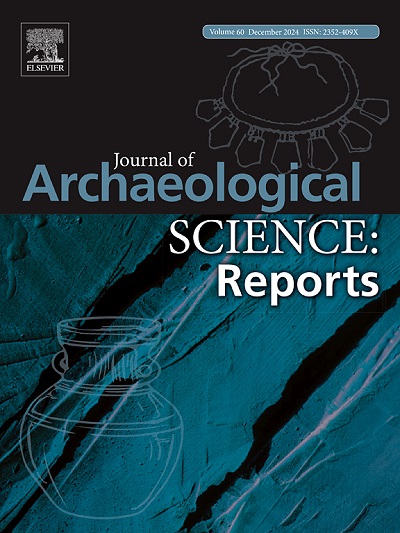揭示阿特尔系粗粒岩屑组合的行为意义:来自摩洛哥东北部Rhafas洞穴使用磨损分析的见解
IF 1.5
2区 历史学
0 ARCHAEOLOGY
引用次数: 0
摘要
最近的发现表明,智人有一个泛非洲起源,北非一直是其生物和文化特征发展和扩展的重要地区。在北非,智人复杂行为的早期表现与大约150ka BP的Aterian文化的出现有关。阿特里安人的作品包括石头、骨头和象牙工具,植物、动物和海洋遗迹,以及用于象征性表达的颜料和穿孔贝壳。在这个文化组合中,研究在石器组合中观察到的印刷技术变异性对于更好地理解智人行为的出现和发展至关重要。然而,后者只有在与工具功能研究相辅相成的情况下才能完全重建。对阿特尔系岩石的磨损研究非常有限,包括粗粒材料,尽管它们在几个阿特尔系序列中丰富。本文介绍了对Rhafas洞穴阿特良层序石英岩组合的使用磨损分析结果。建立了使用磨损实验参考集,并与考古文物的诊断使用磨损进行了比较。通过连续实验验证了石英岩工具在不同材料工作过程中,在机械应力作用下的动态性能和适用性。在实验参考资料收集的指导下,对考古组合的分析揭示了与木材和骨骼加工有关的诊断性使用磨损。总之,我们的研究显示了石英岩工具在阿特良群技术多样性中的适用性和补充作用。本文章由计算机程序翻译,如有差异,请以英文原文为准。
Unveiling the behavioural significance of the Aterian coarse-grained lithic assemblages: Insights from use-wear analysis of Rhafas Cave, Northeast Morocco
Recent discoveries have shown that Homo sapiens has a Pan-African origin, and North Africa has been an important region for the development and expansion of its biological and cultural traits. Early manifestations of Homo sapiens complex behaviour in North Africa are tied to the emergence of the Aterian culture around 150 ka BP. The Aterian repertoire includes stone, bone, and ivory tools, vegetal, animal and marine remains, as well as pigment and perforated shells for symbolic expressions. Within this cultural package, investigating the typo-technological variability observed in the stone tool assemblage is crucial to better understanding the emergence and development of Homo sapiens behaviour. However, the latter can only be fully reconstructed when complemented with the study of the tools’ function.
Use-wear studies on Aterian lithics are very limited including coarse-grained materials despite their abundance in several Aterian sequences. This study presents the results of the use-wear analysis on the quartzite assemblage from the Aterian sequence of Rhafas cave. A use-wear experimental reference collection was created, against which the diagnostic use-wear on archaeological artefacts was compared. Sequential experiments demonstrated the dynamic performance and suitability of quartzite tools when subjected to mechanical stress during working of different materials.
The analysis of the archaeological assemblage, guided by the experimental reference collection, revealed diagnostic use-wear associated with wood and bone working.
In sum, our study shows the suitability, and the complementary role of quartzite tools in the technological versatility of the Aterian groups.
求助全文
通过发布文献求助,成功后即可免费获取论文全文。
去求助
来源期刊

Journal of Archaeological Science-Reports
ARCHAEOLOGY-
CiteScore
3.10
自引率
12.50%
发文量
405
期刊介绍:
Journal of Archaeological Science: Reports is aimed at archaeologists and scientists engaged with the application of scientific techniques and methodologies to all areas of archaeology. The journal focuses on the results of the application of scientific methods to archaeological problems and debates. It will provide a forum for reviews and scientific debate of issues in scientific archaeology and their impact in the wider subject. Journal of Archaeological Science: Reports will publish papers of excellent archaeological science, with regional or wider interest. This will include case studies, reviews and short papers where an established scientific technique sheds light on archaeological questions and debates.
 求助内容:
求助内容: 应助结果提醒方式:
应助结果提醒方式:


